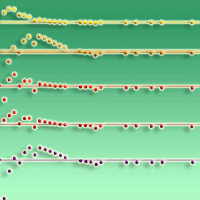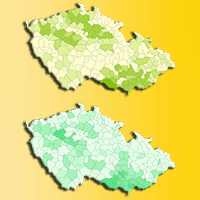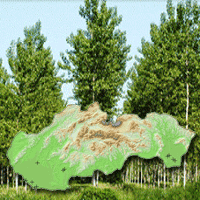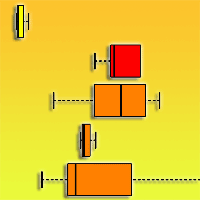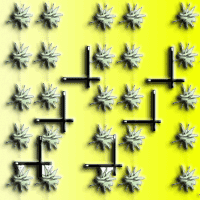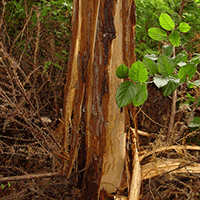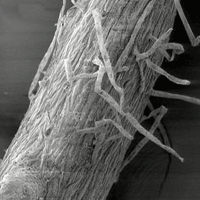
Methods to inventory and strip thin in dense stands of aspen root suckers
William L Headlee , Richard B Hall
iForest - Biogeosciences and Forestry, Volume 8, Issue 5, Pages 590-595 (2015)
doi: https://doi.org/10.3832/ifor1461-008
Published: Apr 22, 2015 - Copyright © 2015 SISEF
Research Articles
Abstract
Aspen and their hybrids have demonstrated high biomass productivity and can produce abundant regeneration in the form of root suckers. This makes aspen particularly intriguing for bio-energy production, because replanting costs can be avoided and additional biomass can be obtained by thinning the regenerating stands. Mechanical strip thinning (removal of stems in parallel strips) has been proposed as a fast and efficient method for capturing biomass that would otherwise be lost to mortality in such stands. However, determining the appropriate width for the residual rows is challenging, due to the difficulty of conducting inventories with traditional sampling tools and the variability in gap sizes between root suckers in the residual rows. In this study, we describe the development and testing of a simple inventory tool that may be used to conduct either fixed-area or variable-radius sampling in these stands. Also described is the development and testing of an equation that uses such inventory data along with Poisson distribution theory to predict the size of the largest gap between root suckers within residual rows, which in turn can be used to inform strip thinning operations. Based on the promising results of our limited tests, we encourage further evaluation of these methods with regeneration from planted and natural aspen stands, as well as other root suckering species.
Keywords
Bio-energy, Coppice, Poisson Distribution, Populus, Thinning
Authors’ Info
Authors’ address
Richard B Hall
Department of Natural Resource Ecology and Management, Iowa State University, 339 Science Hall 2, Ames, 50011-3221 Iowa (USA)
Corresponding author
Paper Info
Citation
Headlee WL, Hall RB (2015). Methods to inventory and strip thin in dense stands of aspen root suckers. iForest 8: 590-595. - doi: 10.3832/ifor1461-008
Academic Editor
Luca Salvati
Paper history
Received: Oct 01, 2014
Accepted: Mar 24, 2015
First online: Apr 22, 2015
Publication Date: Oct 01, 2015
Publication Time: 0.97 months
Copyright Information
© SISEF - The Italian Society of Silviculture and Forest Ecology 2015
Open Access
This article is distributed under the terms of the Creative Commons Attribution-Non Commercial 4.0 International (https://creativecommons.org/licenses/by-nc/4.0/), which permits unrestricted use, distribution, and reproduction in any medium, provided you give appropriate credit to the original author(s) and the source, provide a link to the Creative Commons license, and indicate if changes were made.
Web Metrics
Breakdown by View Type
Article Usage
Total Article Views: 49545
(from publication date up to now)
Breakdown by View Type
HTML Page Views: 42131
Abstract Page Views: 2496
PDF Downloads: 3574
Citation/Reference Downloads: 16
XML Downloads: 1328
Web Metrics
Days since publication: 3889
Overall contacts: 49545
Avg. contacts per week: 89.18
Citation Metrics
Article Citations
Article citations are based on data periodically collected from the Clarivate Web of Science web site
(last update: Mar 2025)
(No citations were found up to date. Please come back later)
Publication Metrics
by Dimensions ©
Articles citing this article
List of the papers citing this article based on CrossRef Cited-by.
References
Inventories with point samples. In: “Forest measurements (5th edn)” (Avery TA, Burkhart HE eds). McGraw-Hill, New York, USA, pp. 230-258.
Gscholar
Variation in rooting potential and shoot growth of full-sib hybrid aspen. MS thesis, Iowa State University, Ames, IA, USA, pp. 63.
Gscholar
Handbook of the Poisson distribution. Operations Research Society of America, Publications in Operations Research No. 11. John Wiley and Sons Inc, New York, NY, USA, pp. 168.
Gscholar
Random and non-contiguous plots in interlocking field layouts. Silvae Genetica 29: 183-190.
Gscholar
SAS® for linear models (4th edn). SAS Institute Inc, Cary, NC, USA, pp. 466.
Gscholar
Regeneration and productivity of aspen grown on repeated short rotations. Research Paper NC-176, North Central Forest Experiment Station, USDA Forest Service, St. Paul, MN, USA, pp. 7. Paper no. 4622, Aspen Bibliography, DigitalCommons@USU, Utah State University, USA.
Online | Gscholar

